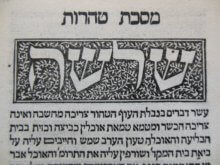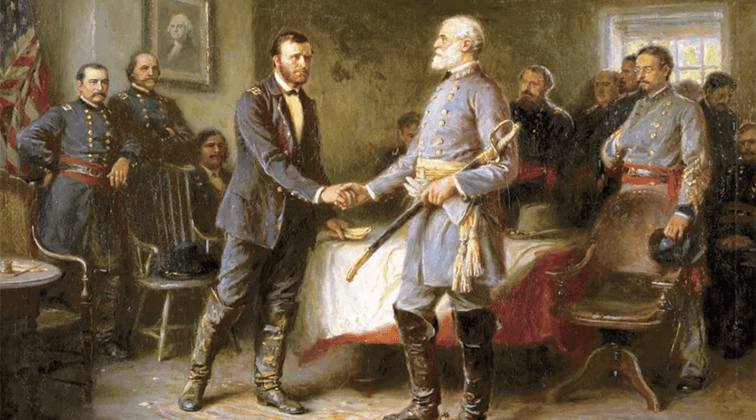Languages Dead and Languages Never Alive: The Yiddish Impulse

For the past few months, we have been dabbling in two very different languages, one earthy, intimate, and famous, the other without country, without history, without color.In neither case do we have any fixed program for extended reading. What is all the work for then? We could say fun, which would be true, but while fun is a fact it is not an explanation.
Now the official point of learning languages is supposed to be communication. Communication is the purpose language per se (we set aside the cynical opinion that language was invented so that we could tell lies) and this is true and very edifying to boot.
Yet it is possible to study a language for its own sake, as more sensible men collect butterflies and rare bindings. As in rock climbing, there is an aesthetic reward to the process and a sense of achievement at the conclusion.
Every language has its own flavor compounded of its peculiar grammatical structure, its varied vocabulary (vocabulary more than grammar, as we will argue in the second of these two pieces), and, most importantly, the recollection of those who speak it.
Let’s look at one language, the more famous one, in this essay. Next time we will report from stranger shores . . .
Nearly everyone in North America has heard about Yiddish, the high-German dialect that was the home language of the Jewish communities in Europe.
Born in the tenth century Rhineland from an ad hoc mash-up of Hebrew, Aramaic, and High German, Yiddish flowered in the Jewish settlements of Eastern Europe, with its own schools, newspapers and literature, from the late nineteenth century until the Second World War.
There are, in fact, still Yiddish communities in Europe. Really. But as a force the language is over and, within a few decades, Europe will be as if Yiddish had never existed. No doubt the Europeans will be happier when they have forgotten.
Not so here in North America.
Here it has become the type of immigrant languages, just shading Italian in that role. Also, it has the reputation of the language par excellence of home and neighborhood.
The massive immigration of Yiddish speakers to North America in the late nineteenth century coincided with the flowering of the popular press, vaudeville, radio, and Hollywood. From this, the language keeps even now a certain populist “cool.” It is not that there is so much written in Yiddish itself in North America as that it was the mother tongue of so many people influential in our mass culture. Thus the language evokes the period, the pre-1914 Socialist movement, Emma Goldman, Houdini, Louis B. Meyer, Meyer Lansky, and the fearsome Harry B. Cohn.
It did not hurt its reception that there was already a lot of German in North America at the time. German, and Germanic languages, while they are certainly foreign, feel to the English speaker somehow related (as they are, of course).
Exempli Gratia
As often happens in such circumstances, there has been an influx of Yiddish vocabulary into English. Everyone knows a few Yiddish words, and they form a sort of set of alternatives to our standard words. They represent ordinary concepts, with a slight edge.
There is, for instance a different between saying:
Brutus, now there was a man.
And:
Brutus was a mensch.
Behind the different vocabularies lies a deep difference in the expectations of proper masculinity.
Yiddish borrowings into English have been most famously collected by the late Leo Rosten in The Joy of Yiddish (the title evokes the era). The first edition, which was straight Rosten, is a little more pungent than the 2nd edition, which was revised to contemporary mores, by his son.
Yiddish is also rich in useful terms of insult:
Brutus is a fool
Saul is a shmuck.
There is an icy contempt in the latter term that would have delighted Shakespeare.
Some other examples:
Courtney Sternwallow complains . . .
Saul Panzer kvetches . . .
The Yiddish word adds a sense of petty nagging that is unforgettable.
And:
Courtney Sternwallow is boldly impudent!
That Saul! What chutzpah!
The Greeks called it having a forehead of brass. The only word that is comparable is the Latin Improbus applied to greedy geese and forest fires, and where do you get to use that word?
And:
Courtney did his usual false-modesty thing . . .
Saul has this “Who? Little me?” shtick.
This word, originally from the world of vaudeville comedians, is indispensible in modern life. Politicians each have a standard Shtick: when they stand up to speak you know what candidate X will say before he or she opens his lips. It could be described as a toolbox of standard techniques.
Proverbial and Piquant
And there are proverbs that stick in the mind
A Mensch trakht un Got lakht
Man proposes and God disposes.
The lakht adds an edge of wormwood.
Zog mir ver dayn khaver is, vel ikh visn du bist.
Tell me who your friend is, and I will know who you are.
An adage worth remembering during political campaigns.
Yiddish has a homeliness particular to German, without the heel-clicking or the metaphysics.
When we learned Greek, we composed sentences affirming the Nature of the Good. When we did Latin, we learned how to direct a cohort to proceed up a hill and massacre villagers. In the text we have at hand (by one Dr. S. Zucker) one learns how to purchase socks and argue with waiters. This is not grand, perhaps, but it is very comfortable.
The grammar of Yiddish is Germanic, without the elaborations of syntax in German.
There is, as far as I can determine, no subjunctive in Yiddish.
No. Subjunctive.
The vocabulary is piquant: the core is germanic , but there is also rather a lot of Slavic. There seems to be rather few words that draw on Latin and Greek.
A few sentences, transcribed, to get across the taste (we won’t translate, because communication is not here the point: )
Eyn mol iz Hershele Ostorfolier in a shtetl. Dortn hotr er gehert az der gvir fun shtel makht khosene zayn tokhter. Iz Hershele gleykh gegangen betn a kuk, ober di diners baym gvir hobn nit gevolt araynlozn in shub keyn mentsh mit alte tserisene kleyder. . . .
With us by Not of Us
Most of those who have Yiddish as their first language are in old age homes or graves. There is no mystery to this. In North America it was a language of those improvising a new life. In Toronto, where we write this, the former community along Spadina Avenue is long dissolved (as is, indeed the Irish community in Cabbagetown). But is far from forgotten.
Many people with Ashkenazi roots study Yiddish e pietate ad patres, but even we pure laine goy can get aesthetic pleasure from an acquaintance with it. Also, if you learn the grammar, you have a better right to throw in the occasional vocabulary item without being a total poseur.
Moreover, it is a gateway to a sizable historical literature–much of it untranslated, and much of it available on the Web. This literature is the heritage of a fact that is so ordinary to us that we do not think much about it: that, for the whole course of European history, we had a parallel society living in the same space, rather like a family in a basement apartment.
They lived with us, worked with us, got along as best they could, but all the time had their own history, their own values, and very much their own thoughts. They were with us as closely as oil and vinegar but they were not “us” and did not forget it, or want to forget it. A very odd situation.
We have studied quite a few languages, but we have found more charm to this one than in any other. There is very little side to it. It is the only Germanic language in which no one has waged war. The Three Stooges grew up in Yiddish speaking homes. What more inducement could you want, already?
Next time around, a language only Sheldon Cooper could love.
A Language Only Sheldon Cooper* Could Love
It was during the nineteen fifties, when corporations began to use the first commercial computers, that the new machines began to press on daily life and thought. We heard much about “artificial intelligence;” we heard for the first time about “programming.”
As when steam power transformed our world, we began to translate many things in our daily life into the terms of the new technology and many began to wonder if we could, in some sense, program . . . . ourselves.
All tools to master nature are soon used on man.
In this atmosphere, notions such as General Semantics seemed plausible.
Another response was the famous, and fabulous, Sapir-Whorf Hypothesis.
It is fabulous because Edward Sapir, respectable anthropologist, and Benjamin Lee Whorf, his respectable student, never co-authored anything or promoted any hypothesis.
They had studied the effect of grammatical structures on thought and had suggested that grammar might shape thought processes, a little. It was the popular press that announced the Discovery (Science Has Proved It!) that
The Language You Speak.
Determines How You Think.
People loved this.
It suggested that if you could talk right, you could think right. You would think right, too, by the powers, because you wouldn’t be able to think wrongly.
One of those entranced by this promise was Dr. James Cooke Brown, sociologist, science fiction writer, and inventor of the Parker Brothers game Careers. This is not the other James Brown.
In 1955, he decided to test the S-W hypothesis by inventing an artificial language, constructed on principles deliberate and unique. He would examine patterns of thought in that language (if he could get someone to think in his schema) and he would be able to see if those thoughts reflected the particular principle of the language. The particularity would serve as a sort of trace element.
Doctor James Brown called his language Loglan ( for “Logical Language.”)
Dr. Brown completed his task, established a foundation, gathered a circle of enthusiasts and rolled ahead into the sixties. He was even mentioned in Scientific American (which was in those days a magazine of respect.)
Alas, a dissident group within the Loglan movement wished to revise the language. Brown resisted, claiming copyright. There was a lawsuit, and Brown lost. The new Loglan was called Lojban formally “Lojban: an instantiation of Loglan”). It differed from Loglan in vocabulary and its heresiarchs were more open to input from users. They welcomed it in fact. Accordingly Lojban has become more popular than Loglan, and it is this Lojban we will discuss below.
Whether Dr. Brown was done wrong . . . is an difficult question.
Lojban and Predicate Logic
So much for Who made it and Why. Let’s now look, briefly, very briefly, at the thing itself.
Lojban has no nouns, verbs, adjectives, adverbs, or prepositions. It does have roots (called “gismu” in a terminology peculiar to the language), proper names, and function words.
The syntax, the distinctive trait we mentioned, aims to mimic predicate logic by adopting the principles of function and arguments. Most of us took predicate logic in high school.
Bear with us, this is the heart of the thing.
Every root (or gismu) in lojban, for example nelci (which means roughly “like”) is a function, that is, a relationship between a number of terms or arguments.
nelci (x1, x2)
The first argument (x1) is defined as the entity that does the liking, e.g. John, the second, (x2) is defined (for this root) as the object of the liking.
John nelci Mary.
Every gismu in the vocabulary comes with an explicit number of arguments and a defined order to the arguments.
Some other vocabulary, cited by Lojban for Beginners, by Robin Turner and Nick Nicholas:
klama: to come, e.g., X1goes/comes to X2 from X3 via X4 by means X5
jikca: to socialize, e.g., X1 interacts/behaves socially with X2; X1 socializes with/is sociable towards X2.
ganlo: e.g., to be closed: X1 (portal/passage/entrance-way) is closed/shut/not open, preventing passage/access to X2 by X3
This central notion of lojban seems to be unique. It is certainly way more radical than Quenya and it makes Esperanto seem homey.
So long as it is made explicit which term belongs to X1 and which to X2 word order is free.
We can say
John nelci Mary
John Mary Nelci
Nelci John Mary
se Mary nelci John ( Mary is liked by John)
Roots may have up to five arguments, and much of the machinery of the language is expended in keeping them in order.
Around this central pole is built a consistent, rigorous and complicated set of permissible variations. Enter that Wood who Dares. We have ventured in and it is a caution.
The Language is Demonstrated
What does the whole thing look like?
Some sample sentences from the book mentioned:
.i la djiotis. noi sazri le karce cu fengu la ranjit. lenu na jundi le ve klama
Jyoti, who was driving the car, is angry at Ranjeet for not paying attention to the route.
i la djiotis. tavla semu’i lenu ri simsa la ranjit. le ka pluja
Jyoti talks so that she is like Ranjeet in complexity.
The following is part of a version of the fable of the North Wind and the Sun (found in wiki). We will not translate, the passage is meant to illustrate the . . . flavour
la .berbif. joi la .sol.
la .berbif. joi la .sol. puki darlu lejei ri jikau ra vlimau le drata kei co’i lenu lo litru vi klama gi’e tagji dasni lo kamgla kosta .i lego’i cu tugni lenu le pamoi snada be lenu naldasri’a le litru le kosta du’o ru’a vlimau le drata .ibazibo la .berbif. . . . .
Those words with periods after them are proper names. The monosyllables are function words. The longer words (mostly of five letters) are either roots or combinations of roots. There is no capitalization. The beginning of a sentence is signalled by an “.i”.
It is certainly not pretty to look at. Some in the lojban community argue it looks much better written in Tegwar, the alphabet from the Lord of the Rings.
This gives one an idea about the lojban community.
Lojban’s Place in the World
What are we to think about all this?
Reaction to lojban is likely to be bemused admiration, as for the dog on its hind legs. Lojban does score very high on system, and the vocabulary, which is adapted from the world’s five major languages makes it as PC as one could wish. No sexist bias here. All the rules of syntax are explicit and without exception. If you can learn a rule, you know the whole rule.
Does it evidence the Sapir-Whorf Hypothesis?
Not really, we suspect, but then that hypothesis was an illusion anyway. There are in any case few enough who actually speak lojban (hardly a percentage point of those who speak Esperanto) and probably even fewer, if any, who can think in it. The trouble with speaking lojban, as one devotee remarked, is that you only get to talk to the kind of people who are interested in lojban.
This is a low jibe, of course, hinting that many lojban enthusiasts live in their parents’ basement, but it reflects a real problem: the language has no history and is totally detached from geography and culture.
Cannot the same be said of Esperanto? Not at all.
Esperanto’s vocabulary is a mash up of European roots, and its syntax reflects Indo-European grammar as a domestic cat reflects a tiger.
Lojban’s syntax is unique and its vocabulary draws from the five major languages of the world. It is a world language, or meant to be.
But no one lives in the world, not as the world. We live in Europe, or more truly in France or Italy, or in North America or more truly in New England or Southern Ontario or Pasadena.
Words Are Better Than Syntax
May we take this opportunity for a digression?
For a long time, the consensus has been that if you can learn the rules of syntax, then plugging in vocabulary is an easy, secondary function.
Vocabulary, on this view, is the mere matter on which form (in the shape of syntax) imposes itself, the bits of mosaic that speakers assemble into a picture.
We have come to suspect this is not so true.
We have come to suspect in fact that vocabulary has been undervalued in language teaching.
Words are not merely arbitrary clots of consonants and vowels. Words have internal structure and they are replete, larded with cultural and historical connotations. Words may be seen as substances in their own right. A man with three hundred common words and no syntax and set among strangers will go lot farther than someone with syntax and no vocabulary. He will sound like a stupid foreigner but he will survive. The history of immigration in North America attests it. Syntax serves words, words are not there as servants of syntax.
May it not be that the supervaluation of syntax issues from the convenience of those who teach language.
A rule is much easier to teach than a word. A rule may be stated as a formula. To learn vocabulary draws on memory and to learn vocabulary well requires strong attention to the cultural context.
End of digression. Thank you for your patience.
The Pleasures of Learning Lojban
Why learn lojban?
Forget the Sapir-Whorf Hypothesis. There is very little to read in lojban, and of most of what there is, the theme, we suspect, is not the message communicated but the fact that one is using that language. A man walking on his hands is not seriously going somewhere.
Why learn lojban?
Why learn any artificial language?
Fun?
Fun, as we have remarked elsewhere, is an answer not an explanation. We fall back, perhaps, on the human instinct for mimesis. An artificial language is perhaps an image of real languages. And accordingly there is the pleasure and liberty in it which flows from all sub-creation (Tolkein’s phrase).
Perhaps we may think of lojban as a Mondrian among linguist artworks–chilly, even spiky, but with a kind of lucid charm.
A project like this is a sport of reason, and reason is proper to man.
On that ground alone Dr. Brown’s invention is worthy of respect and our salutations go out to his memory. We do not think very many people will learn lojban but for those with a taste for this sort of thing, it seems to us far better (“better” is a metaphysical statement, as Chesterton would agree) than chess, more edifying than anagrams, and more within the common range of ability than number theory.




